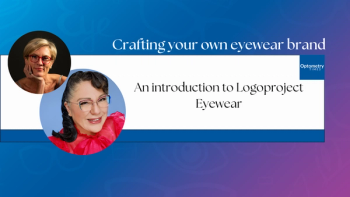
Impact of discomfort on contact lens success
During the Global Contact Lens Forum, a partnership between Vision Expo East and the British Contact Lens Association, Lyndon Jones, PhD, FCOptom, FAAO, explored the factors of contact lens discomfort.
New York City-During the Global Contact Lens Forum, a partnership between
Despite evolving contact lens technology, contact lens wearers are not experiencing any less dryness than they did over a decade ago-in fact, according to one study, 77% of wearers experience dryness now, compared to 20%-50% in 2000, says Dr. Jones.
Over that time, there has been a large increase in the number of silicone hydrogel (SiHy) lenses prescribed, particularly in the United States. While SiHy lenses have solved hypoxia-related complications,they haven’t done much for comfort because 47% of wearers have experienced reduced comfort at the end of the day, says Dr. Jones.
SiHy lenses face a number of challenges, including:
- Wetting between blinks
- Deposition (very low levels of protein, but often denatured)
- Corneal staining
- Infiltrative keratitis (consistently 2 times higher rate with reusable SiHys)
Now manufacturers are moving toward thinking that a SiHy interface may not be best for comfort. New daily disposables are aiming for enhanced wettability and low friction, as recent evidence finds an association between contact lens friction and comfort, says Dr. Jones.
Now the questions with regard to contact lens materials are:
- What influences wettability?
- Do we need a better understanding of surface properties?
- What are the inflammatory risks associated with deposition of certain tear film components?
- Are all deposits bad? Do we understand their relevance? Would materials behave better if they were allowed to retain certain tear components?
Other factors to consider in contact lens comfort are the solution and the case-that is, it may be best to avoid both with a daily disposable. Only 15% of wearers follow ideal case hygiene and replacement practices. And solutions react with different contact lens materials and ocular surfaces in complex ways.
It is also necessary to consider the patient’s ocular surface, keeping an eye out for meibomian gland dysfunction and other dry eye factors.
“As eyecare practitioners, we need to continue to keep abreast of developments in all 3 areas-materials, solutions, and the patient. Comfort issues can be addressed for most patients if a mult-pronged approach is utilized,” says Dr. Jones.
Newsletter
Want more insights like this? Subscribe to Optometry Times and get clinical pearls and practice tips delivered straight to your inbox.













































.png)


